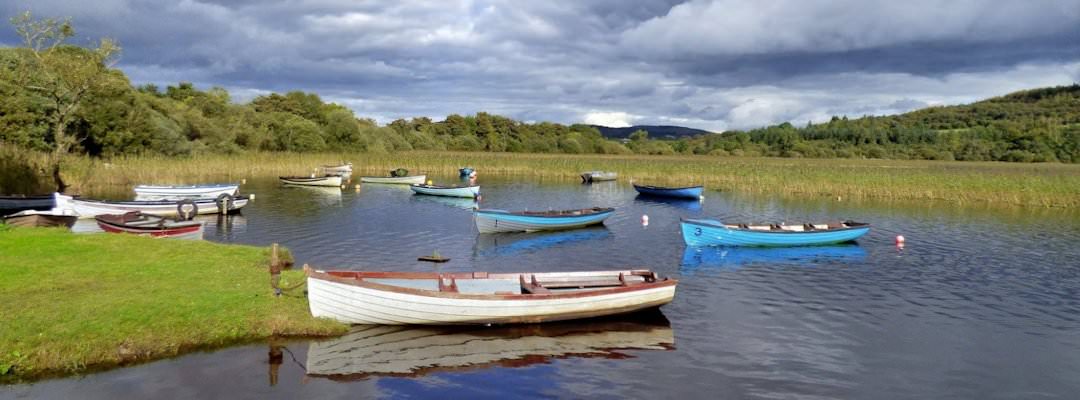
Holiday Homes in County Cavan
Cavan is situated in the North Midlands within the historical province of Ulster. It shares boundaries with Leitrim, Fermanagh, Monaghan, Meath, Westmeath and Longford and the county can boast being the source of the River Shannon, Ireland’s biggest river.
The county has a population of 64,000 and the two major towns are Cavan town and Belturbet. These towns stand on the N3 highway which links Cavan directly with Dublin, although at 70 and 80 miles distances respectively, these locations are a fairly long commute with driving times taking 90 minutes plus.
Holiday Homes in County Carlow
Coarse angling remains one of Cavan’s most popular attractions, but there is also game fishing for brown trout in Lough Sheelin to the south. Cavan is an ideal area for a quiet break or a family holiday.
Gowna Cavan
Find your ideal holiday cottage in Gowna Co. Cavan – This attractive village on the Cavan/Longford border has been a recent winner in the national tidy towns competition
Arvagh Cavan
Find your ideal short stay rental in Arvagh – a picturesque town situated in the heart of the drumlin belt. It lies on the border of Counties Longford and Leitrim
Killeshandra Cavan
Find your ideal holiday home in Killeshandra Co. Cavan – being surrounded by water the town is an excellent location not only for angling but also for canoeing and boating holidays

Cavan County Museum
The Cavan County Museum building designed by William Hague. It is beautifully situated amid extensive grounds, nestling among the East Cavan lakes and drumlins.It was established in 1996 by Cavan County Council to collect, conserve, document and display all aspects of the culture, history and traditions of County Cavan in an informative and entertaining manner to promote an awareness of Cavan’s rich heritage.
A tour of the Museum through its elegant exhibition galleries provides an insight into the heritage of Cavan from antiquity to recent times. Exhibition galleries trace the history and heritage of County Cavan from prehistoric and pre-Christian time, to rural life as it was in the 1950’s.
Rare and precious artefacts on display include the 4000 year old Killycluggin stone, three-faced Corleck Head, the 1000 year old Lough Errol Log Boat, medieval Sheela-na-gigs, the 18th Century Cavan Mace, costumes, implements and machinery used by our ancestors.

Dun an Ri
565 acre Dun na Ri Forest Park is just outside Kingscourt along the banks of the River Cabra and featuring a dramatic gorge embracing part of the Cabra Estate formerly owned by the Pratt family. The Romantic Glen of the Cabra River, stretching the full length of the Park, it is an area steeped in history and legend, it is said that Cuchulain camped there at night while by day conducting his single handed defence of Ulster against the armies of Maeve.
The Normans were here also and in later years the glen echoed to the sounds of Cromwell’s armies. There are four walks of approximately 1.5-2km in length all with points of interest and plentiful varied wildlife. Some more unusual highlights of a visit to Dun na Ri are the Ice House, Toba na Splinne Holy Well and Cromwell’s Bridge.
The ruins of Fleming’s Castle can still be seen as well as Sarah’s Well. Sarah’s Bridge, built in 1801, is the starting point of many of the walks in the park.The Park also has an extremely varied plant community and as a result it is rich in a wide range of wild animals. Red and grey squirrels are common, as are stoats and rabbits.
Mink flourish along the river and otters have been spotted occasionally. The Irish hare is a resident of the Park as is the pigmy shrew. Norway spruce and oak are two important species in the Park. The oak trees are managed to produce a valuable veneer crop.

Drumlane Monastic Site
Drumlane Monastry is located just outside the small village of Milltown, about 4 miles from Belturbet. The monastery occupies a very scenic site on the edge of a lake which forms one of the northwesterly outliers from Lough Oughter.
It was reputedly founded by St. Mogue, the Bishop of Ferns, in the 6th century, though some have argued that St. Columcille was the original founder and that St. Mogue simply re-established it. St. Mary’s priory for the Augustinian canons was founded here in the 12th Century. The remains are of a round tower, church, graveyard, fragments of a cross-inscribed stone and the site of a priory.
The round tower is one of the most striking features of the complex, standing to over 11m in height. Look out for the carvings of birds on the on the external wall, 2.2 metres above ground level. The gate at the entrance to the graveyard also features a stone carving, this time in the form of a small cross.
The church features a number of interesting stone heads, one above the door in the west wall and another three on the external face of the east window. About 150 metres south of the church there are a series of earthworks which probably represent the remains of the 12th Century Augustinian Priory. The Priory may have been demolished after the suppression of the monasteries in the 15th and 16th centuries.

Ramor Theatre
Ramor Theatre opened to the public in September 1999 and since then we have been a part of the cultural and artistic life in County Cavan. We aim to nurture the performing arts in the county and present a varied programme of performances. We also encourage international acts and individuals to perform at the theatre. We facilitate youth drama and engage in an educational programme. The theatre is run by the Local authority and funded by the Arts Council.





